Books by Chris Roosevelt
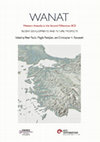
WANAT. Western Anatolia in the Second Millennium BCE: Recent Developments and Future Prospects, 2024
This peer-reviewed edited volume brings together the results of a diverse group of international ... more This peer-reviewed edited volume brings together the results of a diverse group of international researchers conducting new fieldwork, applying new approaches, and making new interpretations about the archaeology of Middle and Late Bronze Age western Anatolia. The territory is huge, and it shows considerable regional diversity. What makes western Anatolian cultures different from their neighbors? Is it possible to identify discrete subregions clearly? And what trajectories of local cultural change and regional interaction did they follow? In addressing these and many other questions, the contributors to this volume provide fresh overviews of current states of research, demonstrating material and chronological synchronicities and/or gaps in knowledge that stretch across the broad territory of western Anatolia, just as they encourage further research into defining regional and sub-regional specificities. Such specificities suggest that the area should not be thought of as one monolithic cultural whole. Rather, they allude to a collection of related yet discrete units, whose shared commonalities stem from participation in overlapping spheres of communication, exchange, and political interaction, justifying their consideration together in a volume like this one.

WANAT. MÖ İkinci Binyılda Batı Anadolu: Son Gelişmeler ve Geleceğe Dair Görüşler, 2024
Hakemlerce değerlendirilerek yayına hazırlanan bu kitap, Orta ve Geç Tunç Çağı Batı Anadolu arkeo... more Hakemlerce değerlendirilerek yayına hazırlanan bu kitap, Orta ve Geç Tunç Çağı Batı Anadolu arkeolojisine yönelik yeni çalışmalar yürüten, yeni yaklaşımlar benimseyip yeni yorumlar ortaya koyan çeşitli uluslararası araştırmacıların sonuçlarını bir araya getiriyor. Söz konusu alan oldukça büyük olmakla birlikte önemli ölçüde bir bölgesel çeşit- liliğe de sahip. Batı Anadolu kültürlerini komşularından ayıran şey ne? Belirli alt bölgeleri açık bir şekilde tanım- lamak mümkün mü? Bu kültürler, yerel kültürel değişim ve bölgesel etkileşim bağlamında hangi yolları izlediler? Bu ve bunun gibi daha pek çok meseleye ışık tutmaya çalışan araştırmacılar, Batı Anadolu’nun geniş toprakla- rına yayılan maddi ve kronolojik eş zamanlılığı ve/veya bilgilerimizdeki eksiklikleri ortaya koyarak araştırmala- rın mevcut durumuna ilişkin güncel bir değerlendirme sunarken, bölgesel ve alt bölgesel farklılıkların tanımlan- masına yönelik gelecek araştırmalara da yol gösteriyor. Bu farklılıklar, bölgenin yekpare bir kültürel bütün olarak ele alınmaması gerektiğini ortaya koyuyor. Bunlar, daha çok birbiriyle iç içe geçen iletişim, değiş tokuş ve politik etkileşim alanlarına dahil olmaları nedeniyle müşterekle- şen, ilişkili ancak farklı olan birimlerin göstergesidir ve bu nedenle bu çalışmaya dahil edildiler.
Değişim Rüzgârları: Anadolu’da Çevre ve Toplum, 2022
Roosevelt, C. H., and J. Haldon, eds. 2022. Değişim Rüzgârları: Anadolu’da Çevre ve Toplum. Koç Ü... more Roosevelt, C. H., and J. Haldon, eds. 2022. Değişim Rüzgârları: Anadolu’da Çevre ve Toplum. Koç Üniversitesi Anadolu Medeniyetleri Araştırma Merkezi (ANAMED) Serisi. İstanbul: Koç Üniversitesi Yayınları. ISBN: 9786258022308
Winds of Change: Environment and Society in Anatolia, 2021
Roosevelt, C. H., and J. Haldon, eds. 2021. Winds of Change: Environment and Society in Anatolia.... more Roosevelt, C. H., and J. Haldon, eds. 2021. Winds of Change: Environment and Society in Anatolia. Koç University Research Center for Anatolian Civilizations (ANAMED) Series. Istanbul: Koç University Press. ISBN: 9786057685704.
Spatial Webs: Mapping Anatolian Pasts for Research and the Public, 2021
Roosevelt, C. H., ed. 2021. Spatial Webs: Mapping Anatolian Pasts for Research and the Public. Ko... more Roosevelt, C. H., ed. 2021. Spatial Webs: Mapping Anatolian Pasts for Research and the Public. Koç University Research Center for Anatolian Civilizations (ANAMED) Series. Istanbul: Koç University Press. ISBN 9786057685377
Tarih Boyunca Anadolu’da Hayırseverlik, 2021
Tekin, O., C. H. Roosevelt, and E. Akyürek, eds. 2021. Tarih Boyunca Anadolu’da Hayırseverlik. İs... more Tekin, O., C. H. Roosevelt, and E. Akyürek, eds. 2021. Tarih Boyunca Anadolu’da Hayırseverlik. İstanbul: Vehbi Koç Vakfı. ISBN 9786057685667
Mekânsal Ağlar: Araştırma ve Kamu Erişimi İçin Anadolu’nun Geçmişinin Haritalandırılması, 2020
Roosevelt, C. H., ed. 2020. Mekânsal Ağlar: Araştırma ve Kamu Erişimi İçin Anadolu’nun Geçmişinin... more Roosevelt, C. H., ed. 2020. Mekânsal Ağlar: Araştırma ve Kamu Erişimi İçin Anadolu’nun Geçmişinin Haritalandırılması. İstanbul: Anadolu Medeniyetleri Araştırma Merkezi. ISBN 9786057685537
Vehbi Koç Foundation, 2020
Tekin, O., C. H. Roosevelt, and E. Akyürek, eds. 2020. Philanthropy in Anatolia through the Ages.... more Tekin, O., C. H. Roosevelt, and E. Akyürek, eds. 2020. Philanthropy in Anatolia through the Ages. Istanbul: Vehbi Koç Foundation.
ISBN 978-605-7685-27-8
Koç University Press, 2017

Cambridge University Press, 2009
In The Archaeology of Lydia, From Gyges to Alexander, Christopher H. Roosevelt provides the first... more In The Archaeology of Lydia, From Gyges to Alexander, Christopher H. Roosevelt provides the first overview of the regional archaeology of Lydia in western Turkey, including much previously unpublished evidence and a fresh synthesis of the archaeology of Sardis, the ancient capital of the region. Combining data from regional surveys, stylistic analyses of artifacts in local museums, ancient texts, and environmental studies, he presents a new perspective on the archaeology of this area. To assess the importance of Lydian landscapes under Lydian and Achaemenid rule, roughly between the seventh and fourth centuries BCE, Roosevelt situates the archaeological evidence within frameworks established by evidence for ancient geography, environmental conditions, and resource availability and exploitation. Drawing on detailed and copiously illustrated evidence presented in a regionally organized catalogue, this book considers the significance of evidence of settlement and burial at Sardis and beyond for understanding Lydian society as a whole and the continuity of cultural traditions across the transition from Lydian to Achaemenid hegemony.
Articles by Chris Roosevelt
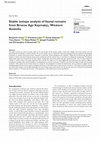
This paper presents the results of stable carbon (δ 13 C) and nitrogen (δ 15 N) isotopic analysis... more This paper presents the results of stable carbon (δ 13 C) and nitrogen (δ 15 N) isotopic analysis of bulk bone collagen from faunal remains from the Bronze Age site of Kaymakçı in western Anatolia. We use the isotopic values in conjunction with zooarchaeological data and contextual archaeological information to examine human-environment interactions; in particular, animal management and husbandry. Middle and Late Bronze Age agricultural systems in western and central Anatolia remain poorly understood, and this research aims to contribute to rectifying this research gap. We obtained stable isotopic values from both wild and domestic species, including deer, hare, birds, catfish, dogs, pigs, caprids and cattle. The δ 13 C values range from −22.0‰ to −16.9‰ and the δ 15 N values range from 2.3‰ to 10.3‰. For cattle, the δ 13 C values suggest that some specimens were subject to different management strategies, likely related to feeding or herding patterns or even the movement of animals in and around the region through some exchange mechanism. There appears to be no fixed location or strategy for the management of caprids and, furthermore, there is evidence to suggest that the herding/management areas of some caprids overlapped with those of wild animals such as deer and hare. Variation in δ 15 N values for pigs may indicate that whilst some animals in the sampled assemblage were free-roaming, others were penned. For the pigs and some other herbivorous domesticated species variation in δ 15 N values may also point to the exploitation of the wetland areas around Lake Marmara.
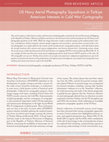
Cartographic Perspectives, 2024
***LINK TO OPEN-ACCESS ARTICLE ON JOURNAL WEBSITE: https://cartographicperspectives.org/index.php... more ***LINK TO OPEN-ACCESS ARTICLE ON JOURNAL WEBSITE: https://cartographicperspectives.org/index.php/journal/article/view/1835/2295
This article explores a little-known archive of historical aerial photographs curated by the General Directorate of Mapping of the Republic of Türkiye’s Ministry of Defense and discusses the historical context of their production by US Navy aerial photography squadrons in the 1950s. While the images themselves enable a technical analysis of the method of their collection, contemporary military manuals, domain-specific magazines and newsletters, and eyewitness accounts of how similar photographs were captured fill out the contexts of their production for cartographic purposes, with information about the aircraft involved, their cameras and camera configurations, and mission characteristics. Continuing sections situate the aerial surveys within the framework of US-led initiatives in mapping NATO territories following World War II. As one example of what must have been many special mapping agreements made between NATO countries at this time, the US cartographic surveys over Türkiye discussed here are an expression of postwar realignments of global power, put to the purposes of containment-based security preparations and infrastructure development, and neatly intertwining American military and commercial interests early in the Cold War.

Environment and History, 2024
***LINK TO OPEN-ACCESS ARTICLE ON JOURNAL WEBSITE: https://www.liverpooluniversitypress.co.uk/doi... more ***LINK TO OPEN-ACCESS ARTICLE ON JOURNAL WEBSITE: https://www.liverpooluniversitypress.co.uk/doi/epdf/10.3197/096734022X16470180631460
The study of Ottoman lakes and wetlands from the perspective of management and conservation is an emerging field. Scholars have explored Ottoman strategies for managing agricultural and extractive landscapes, yet detailed investigation of socio-political responses to dynamic wetlands, particularly during periods of drastic climate shifts, requires deeper investigation. Our research on wetlands and lakes moves from the purview of waqfs (pious foundations) to the emergence of the Ottoman Public Debt Administration (OPDA). By examining the shifting perspectives of institutional authority and community responses to it from the early modern period to the nineteenth century, we discuss the complexities of wetland management in the Marmara Lake Basin within the sancak of Saruhan (contemporary Manisa) in western Anatolia. We argue that intimate knowledge of this specific ecosystem played a critical role in mitigating attempts at reclamation and land grabbing and ultimately in developing legal structures of and policies for Ottoman conservation strategies. We situate our discussion within the paradigm of environing made possible by detailed longue-durée archival narratives; these micro-histories afford a dynamic perspective into non-linear responses to ecological and political changes and provide a local lens into the scalar impacts of human agency.
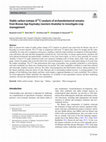
Vegetation History and Archaeobotany, 2023
***LINK TO ARTICLE ON JOURNAL WEBSITE: https://link.springer.com/article/10.1007/s00334-023-00941... more ***LINK TO ARTICLE ON JOURNAL WEBSITE: https://link.springer.com/article/10.1007/s00334-023-00941-1
Here we present the results of stable carbon isotope (δ13C) analysis on charred crop seeds from the Bronze Age site of Kaymakçı in western Anatolia. The δ13C data, in conjunction with some 14C-dated seeds, allows for insights into the water availability for crops and a comparison among taxa, enabling a relatively high-resolution investigation of field agriculture, crop cultivation, and crop and field management around the site. From this data, we discuss agroeconomic structures and local paleoenvironmental and paleoclimatic conditions in the local micro-region, as well as more generally for western Anatolia. A total of 35 single carbonized seeds were analysed, including seeds of wheat, barley, bitter vetch, pulses, and grape. Almost all samples date to the first half of the second millennium BC, based on radiocarbon dating of 24 seeds from the sample assemblage. The δ13C data demonstrates that crops at Kaymakçı were generally moderately to well-watered, and water availability was likely not a limiting factor for growth. This water availability is unlikely to result from artificial and man-made irrigation systems, however, but rather crop-management and field-location choices, taking advantage of the humid conditions along the shores of Lake Marmara and in surrounding wetland environs. A seeming paradox is the ubiquity of risk buffering crops (barley and bitter vetch) despite a supposed abundance of water availability. This evidence for mixed approaches further underlines the importance of versatility in local agricultural systems and their underlying structures, favored and implemented by local communities.
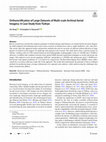
Journal of Geovisualization and Spatial Analysis, 2023
***LINK TO ARTICLE ON JOURNAL WEBSITE: https://link.springer.com/article/10.1007/s41651-023-00153... more ***LINK TO ARTICLE ON JOURNAL WEBSITE: https://link.springer.com/article/10.1007/s41651-023-00153-1
Recent research has unveiled the immense potential of orthorectifying small datasets of scanned historical aerial imagery for multi-temporal environmental and social science research on limited areas such as single landforms, sites, and cities. This article takes this approach further and presents methods that aim for accurate yet efficient orthorectification of large datasets of archival aerial imagery for landscape and regional-scale research. The study draws from a colossal archive in Türkiye, working with over 850 scanned historical aerial photographs at photographic scales of 1:60,000 and 1:30,000 to showcase a workflow that combines structure-from-motion (SfM) and auto-registration techniques to rectify and mosaic the images. This endeavor covers an area spanning 3,600 km 2 , and produces a 1:60,000 scale orthomosaic and a 1:30,000 rectified mosaic with spatial resolutions of 1.4 m and 0.8 m, respectively. The Root Mean Square Error (RMSE) values reflect sensitivity to accuracy-efficiency trade-offs of the approach. The results thus demonstrate the potential of these combined methods for producing large coverage orthomosaics for regional-scale analyses, while underscoring the challenges that future research must address.
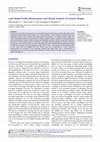
Journal of Field Archaeology, 2023
***LINK TO OPEN-ACCESS ARTICLE ON JOURNAL WEBSITE: https://www.tandfonline.com/doi/epdf/10.1080/0... more ***LINK TO OPEN-ACCESS ARTICLE ON JOURNAL WEBSITE: https://www.tandfonline.com/doi/epdf/10.1080/00934690.2022.2128549?needAccess=true
Ceramics are one of the commonest sources of archaeological information, yet their abundance often confounds documentation and analysis. This article presents a new method of documenting and analyzing ceramics that includes laser-aided profile measurement to capture ceramic shape and other information quickly and accurately, resulting in digital outputs suitable for both publication and morphometric analysis. Linked software and database solutions enable unsupervised machine learning to cluster shapes based on similarity, eventually assisting typological analysis. Following an overview of current practices in ceramic recording and both standard and computational shape classification analyses, the new approach is discussed in full as a documentary and analytical tool. A case study from the Middle and Late Bronze Age site of Kaymakçı in western Anatolia demonstrates the benefits of the recording method and helps show that a combination of automated and manual shape clustering techniques currently remains the best practice in ceramic shape classification.
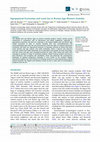
Environmental Archaeology, 1-15., 2022
The Middle and Late Bronze Ages of western Anatolia (modern Turkey) remains poorly understood in ... more The Middle and Late Bronze Ages of western Anatolia (modern Turkey) remains poorly understood in comparison with its Mycenaean and Hittite neighbours, especially in agricultural economies and land use. Kaymakçı is the largest Middle and Late Bronze Age citadel excavated to date in western Anatolia and new archaeobotanical and zooarchaeological data from the site presented here shed new light on regional agricultural economies and land use. Agricultural practices at Kaymakçı focused on barley and bitter vetch farming and pig, caprine, and cattle husbandry within a diverse and extensive economic system that made substantial use of wild plants and animals for food, technology, and fuel. Goats and pigs were managed primarily for meat, while sheep and cattle were managed to produce a range of secondary products. Wood charcoal analysis reconstructs both deciduous and evergreen oak woodlands, which also dominate the contemporary landscape. In regional perspective, Kaymakçı is most similar ...

Journal of Archaeological Science: Reports, 36, 102800., 2020
Archaeobotanical analysis at Kaymakçı, a second-millennium BCE site in western Turkey, gives the ... more Archaeobotanical analysis at Kaymakçı, a second-millennium BCE site in western Turkey, gives the first evidence for Bronze Age agricultural practices in central western Anatolia, and represents one of a very few contemporary datasets for western Anatolia as a whole. Inhabitants of the site adopted a diversified agricultural system, with major crops including barley, free-threshing wheat, bitter vetch, chickpea, and grape. Spatial analysis of crop taxa suggests differential distribution of wheat and chickpea across the site, while initial results of diachronic analysis indicate a narrowing of wheat agriculture over time. The archaeobotanical assemblage of Kaymakçı is compared to those of contemporary sites throughout the Aegean and Anatolia, where it represents an intermediate position, an apparent hybrid of Aegean and Anatolian agricultural practices. This study provides a valuable new perspective on agriculture of the Late Bronze Age in a particularly understudied region of the eastern Mediterranean.
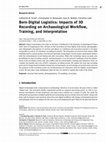
Open Archaeology, 2021
Digital technologies have been at the heart of fieldwork at the Kaymakçı Archaeological Project (... more Digital technologies have been at the heart of fieldwork at the Kaymakçı Archaeological Project (KAP) since its beginning in 2014. All data on this excavation are born-digital, from textual, photographic, and videographic descriptions of contexts and objects in a database and excavation journals to 2D plans and profiles as well as 3D volumetric recording of contexts. The integration of structure from motion (SfM) modeling and its various products has had an especially strong impact on how project participants interact with the archaeological record during and after excavation. While this technology opens up many new possibilities for data recording, analysis, and presentation, it can also present challenges when the requirements of the recording system come into conflict with an archaeologist's training and experience. Here, we consider the benefits and costs of KAP's volumetric recording system. We explore the ways that recording protocols for image-based modeling change ho...
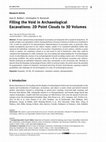
Open Archaeology, 2021
3D data captured from archaeological excavations are frequently left to speak for themselves. 3D ... more 3D data captured from archaeological excavations are frequently left to speak for themselves. 3D models of objects are uploaded to online viewing platforms, the tops or bottoms of surfaces are visualised in 2.5D, or both are reduced to 2D representations. Representations of excavation units, in particular, often remain incompletely processed as raw surface outputs, unable to be considered individual entities that represent the individual, volumetric units of excavation. Visualisations of such surfaces, whether as point clouds or meshes, are commonly viewed as an end result in and of themselves, when they could be considered the beginning of a fully volumetric way of recording and understanding the 3D archaeological record. In describing the creation of an archaeologically focused recording routine and a 3D-focused data processing workflow, this article provides the means to fill the void between excavation-unit surfaces, thereby producing an individual volumetric entity that corresp...




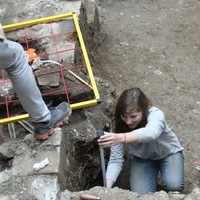



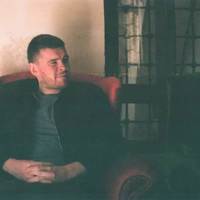


Uploads
Books by Chris Roosevelt
ISBN 978-605-7685-27-8
Articles by Chris Roosevelt
This article explores a little-known archive of historical aerial photographs curated by the General Directorate of Mapping of the Republic of Türkiye’s Ministry of Defense and discusses the historical context of their production by US Navy aerial photography squadrons in the 1950s. While the images themselves enable a technical analysis of the method of their collection, contemporary military manuals, domain-specific magazines and newsletters, and eyewitness accounts of how similar photographs were captured fill out the contexts of their production for cartographic purposes, with information about the aircraft involved, their cameras and camera configurations, and mission characteristics. Continuing sections situate the aerial surveys within the framework of US-led initiatives in mapping NATO territories following World War II. As one example of what must have been many special mapping agreements made between NATO countries at this time, the US cartographic surveys over Türkiye discussed here are an expression of postwar realignments of global power, put to the purposes of containment-based security preparations and infrastructure development, and neatly intertwining American military and commercial interests early in the Cold War.
The study of Ottoman lakes and wetlands from the perspective of management and conservation is an emerging field. Scholars have explored Ottoman strategies for managing agricultural and extractive landscapes, yet detailed investigation of socio-political responses to dynamic wetlands, particularly during periods of drastic climate shifts, requires deeper investigation. Our research on wetlands and lakes moves from the purview of waqfs (pious foundations) to the emergence of the Ottoman Public Debt Administration (OPDA). By examining the shifting perspectives of institutional authority and community responses to it from the early modern period to the nineteenth century, we discuss the complexities of wetland management in the Marmara Lake Basin within the sancak of Saruhan (contemporary Manisa) in western Anatolia. We argue that intimate knowledge of this specific ecosystem played a critical role in mitigating attempts at reclamation and land grabbing and ultimately in developing legal structures of and policies for Ottoman conservation strategies. We situate our discussion within the paradigm of environing made possible by detailed longue-durée archival narratives; these micro-histories afford a dynamic perspective into non-linear responses to ecological and political changes and provide a local lens into the scalar impacts of human agency.
Here we present the results of stable carbon isotope (δ13C) analysis on charred crop seeds from the Bronze Age site of Kaymakçı in western Anatolia. The δ13C data, in conjunction with some 14C-dated seeds, allows for insights into the water availability for crops and a comparison among taxa, enabling a relatively high-resolution investigation of field agriculture, crop cultivation, and crop and field management around the site. From this data, we discuss agroeconomic structures and local paleoenvironmental and paleoclimatic conditions in the local micro-region, as well as more generally for western Anatolia. A total of 35 single carbonized seeds were analysed, including seeds of wheat, barley, bitter vetch, pulses, and grape. Almost all samples date to the first half of the second millennium BC, based on radiocarbon dating of 24 seeds from the sample assemblage. The δ13C data demonstrates that crops at Kaymakçı were generally moderately to well-watered, and water availability was likely not a limiting factor for growth. This water availability is unlikely to result from artificial and man-made irrigation systems, however, but rather crop-management and field-location choices, taking advantage of the humid conditions along the shores of Lake Marmara and in surrounding wetland environs. A seeming paradox is the ubiquity of risk buffering crops (barley and bitter vetch) despite a supposed abundance of water availability. This evidence for mixed approaches further underlines the importance of versatility in local agricultural systems and their underlying structures, favored and implemented by local communities.
Recent research has unveiled the immense potential of orthorectifying small datasets of scanned historical aerial imagery for multi-temporal environmental and social science research on limited areas such as single landforms, sites, and cities. This article takes this approach further and presents methods that aim for accurate yet efficient orthorectification of large datasets of archival aerial imagery for landscape and regional-scale research. The study draws from a colossal archive in Türkiye, working with over 850 scanned historical aerial photographs at photographic scales of 1:60,000 and 1:30,000 to showcase a workflow that combines structure-from-motion (SfM) and auto-registration techniques to rectify and mosaic the images. This endeavor covers an area spanning 3,600 km 2 , and produces a 1:60,000 scale orthomosaic and a 1:30,000 rectified mosaic with spatial resolutions of 1.4 m and 0.8 m, respectively. The Root Mean Square Error (RMSE) values reflect sensitivity to accuracy-efficiency trade-offs of the approach. The results thus demonstrate the potential of these combined methods for producing large coverage orthomosaics for regional-scale analyses, while underscoring the challenges that future research must address.
Ceramics are one of the commonest sources of archaeological information, yet their abundance often confounds documentation and analysis. This article presents a new method of documenting and analyzing ceramics that includes laser-aided profile measurement to capture ceramic shape and other information quickly and accurately, resulting in digital outputs suitable for both publication and morphometric analysis. Linked software and database solutions enable unsupervised machine learning to cluster shapes based on similarity, eventually assisting typological analysis. Following an overview of current practices in ceramic recording and both standard and computational shape classification analyses, the new approach is discussed in full as a documentary and analytical tool. A case study from the Middle and Late Bronze Age site of Kaymakçı in western Anatolia demonstrates the benefits of the recording method and helps show that a combination of automated and manual shape clustering techniques currently remains the best practice in ceramic shape classification.
ISBN 978-605-7685-27-8
This article explores a little-known archive of historical aerial photographs curated by the General Directorate of Mapping of the Republic of Türkiye’s Ministry of Defense and discusses the historical context of their production by US Navy aerial photography squadrons in the 1950s. While the images themselves enable a technical analysis of the method of their collection, contemporary military manuals, domain-specific magazines and newsletters, and eyewitness accounts of how similar photographs were captured fill out the contexts of their production for cartographic purposes, with information about the aircraft involved, their cameras and camera configurations, and mission characteristics. Continuing sections situate the aerial surveys within the framework of US-led initiatives in mapping NATO territories following World War II. As one example of what must have been many special mapping agreements made between NATO countries at this time, the US cartographic surveys over Türkiye discussed here are an expression of postwar realignments of global power, put to the purposes of containment-based security preparations and infrastructure development, and neatly intertwining American military and commercial interests early in the Cold War.
The study of Ottoman lakes and wetlands from the perspective of management and conservation is an emerging field. Scholars have explored Ottoman strategies for managing agricultural and extractive landscapes, yet detailed investigation of socio-political responses to dynamic wetlands, particularly during periods of drastic climate shifts, requires deeper investigation. Our research on wetlands and lakes moves from the purview of waqfs (pious foundations) to the emergence of the Ottoman Public Debt Administration (OPDA). By examining the shifting perspectives of institutional authority and community responses to it from the early modern period to the nineteenth century, we discuss the complexities of wetland management in the Marmara Lake Basin within the sancak of Saruhan (contemporary Manisa) in western Anatolia. We argue that intimate knowledge of this specific ecosystem played a critical role in mitigating attempts at reclamation and land grabbing and ultimately in developing legal structures of and policies for Ottoman conservation strategies. We situate our discussion within the paradigm of environing made possible by detailed longue-durée archival narratives; these micro-histories afford a dynamic perspective into non-linear responses to ecological and political changes and provide a local lens into the scalar impacts of human agency.
Here we present the results of stable carbon isotope (δ13C) analysis on charred crop seeds from the Bronze Age site of Kaymakçı in western Anatolia. The δ13C data, in conjunction with some 14C-dated seeds, allows for insights into the water availability for crops and a comparison among taxa, enabling a relatively high-resolution investigation of field agriculture, crop cultivation, and crop and field management around the site. From this data, we discuss agroeconomic structures and local paleoenvironmental and paleoclimatic conditions in the local micro-region, as well as more generally for western Anatolia. A total of 35 single carbonized seeds were analysed, including seeds of wheat, barley, bitter vetch, pulses, and grape. Almost all samples date to the first half of the second millennium BC, based on radiocarbon dating of 24 seeds from the sample assemblage. The δ13C data demonstrates that crops at Kaymakçı were generally moderately to well-watered, and water availability was likely not a limiting factor for growth. This water availability is unlikely to result from artificial and man-made irrigation systems, however, but rather crop-management and field-location choices, taking advantage of the humid conditions along the shores of Lake Marmara and in surrounding wetland environs. A seeming paradox is the ubiquity of risk buffering crops (barley and bitter vetch) despite a supposed abundance of water availability. This evidence for mixed approaches further underlines the importance of versatility in local agricultural systems and their underlying structures, favored and implemented by local communities.
Recent research has unveiled the immense potential of orthorectifying small datasets of scanned historical aerial imagery for multi-temporal environmental and social science research on limited areas such as single landforms, sites, and cities. This article takes this approach further and presents methods that aim for accurate yet efficient orthorectification of large datasets of archival aerial imagery for landscape and regional-scale research. The study draws from a colossal archive in Türkiye, working with over 850 scanned historical aerial photographs at photographic scales of 1:60,000 and 1:30,000 to showcase a workflow that combines structure-from-motion (SfM) and auto-registration techniques to rectify and mosaic the images. This endeavor covers an area spanning 3,600 km 2 , and produces a 1:60,000 scale orthomosaic and a 1:30,000 rectified mosaic with spatial resolutions of 1.4 m and 0.8 m, respectively. The Root Mean Square Error (RMSE) values reflect sensitivity to accuracy-efficiency trade-offs of the approach. The results thus demonstrate the potential of these combined methods for producing large coverage orthomosaics for regional-scale analyses, while underscoring the challenges that future research must address.
Ceramics are one of the commonest sources of archaeological information, yet their abundance often confounds documentation and analysis. This article presents a new method of documenting and analyzing ceramics that includes laser-aided profile measurement to capture ceramic shape and other information quickly and accurately, resulting in digital outputs suitable for both publication and morphometric analysis. Linked software and database solutions enable unsupervised machine learning to cluster shapes based on similarity, eventually assisting typological analysis. Following an overview of current practices in ceramic recording and both standard and computational shape classification analyses, the new approach is discussed in full as a documentary and analytical tool. A case study from the Middle and Late Bronze Age site of Kaymakçı in western Anatolia demonstrates the benefits of the recording method and helps show that a combination of automated and manual shape clustering techniques currently remains the best practice in ceramic shape classification.
This contribution presents the results of a pilot study of earthen materials excavated at the Middle to Late Bronze Age site of Kaymakçı, located in western Anatolia. It argues that systematic collection and analysis of fragmentary and difficult‐to‐identify earthen materials is challenging, yet crucial. These materials inform on activities of which traces are preserved in the archaeological record but which have been largely under‐ ‐researched. Flourishing studies on earthen findings foreground architectural materials, such as mudbrick, and well‐preserved features and objects. However, earthen objects and architectural features were utilized more widely than in building architecture and only a small portion of excavated sites has good preservation. We, therefore, present the different categories of earthen materials discovered at Kaymakçı, specifically ar‐ chitecture, installations, and portable items. Our work demonstrates that by incorporating new knowledge of archaeological remains at the site and re‐studying the earthen assemblage it is possible to gain a better understanding of the morphological, functional, and social aspects of this dataset.
This paper explores pig husbandry across the Aegean and Anatolia based on zooarchaeological data and ancient texts. The western Anatolian citadel of Kaymakçı is the departure point for discussion, as it sits in the Mycenaean-Hittite interaction zone and provides a uniquely large assemblage of pig bones. NISP, mortality, and biometric data from 38 additional sites across Greece and Anatolia allows observation of intra- and interregional variation in the role of pigs in subsistence economies, pig management, and pig size characteristics. Results show that, first, pig abundance at Kaymakçı matches Mycenaean and northern Aegean sites more closely than central, southern, and southeastern Anatolian sites; second, pig mortality data and biometry suggest multiple husbandry strategies and pig populations at Kaymakçı, but other explanations cannot yet be excluded; and, third, for the Aegean and Anatolia during the Late Bronze Age more generally, pig data suggests pluriformity, which challenges the use of “pig principles” in this region.
Während der ersten Grabungssaison im Jahr 2014 wurde in der spätbronzezeitlichen Siedlung Kaymakçı ein Bronzemesser mit einem ungewöhnlich verzierten Griff gefunden. Kaymakçı ist eine kürzlich entdeckte Zitadelle, die 100 km östlich der Ägäisküste im Gediz-Tal lokalisiert ist. Es ist eine der wenigen Fundstellen im Inneren Westanatoliens, die durch reguläre Grabungen erforscht wird. Das Messer kam in einem turmartigen Gebäude zutage, das sich an die Befestigungen im Nordwesten der Zitadelle anschloss. Es gehört zu einer kleinen Gruppe von Messern mit festem Griff (Sandars-Klasse 4), die bis vor Kurzem nur von Elitegräbern und kultischen Kontexten auf der Peloponnes, Kreta, Psara und Troia bekannt waren. Diese Messer sind u. a. durch Rippenverzierung und einen massiven Bronzeknopf am Griffende charakterisiert. Das geometrische Fischgrätmuster an dem Messer aus Kaymakçı findet jedoch keine Parallelen in der minoischen und mykenischen Kunst, ist dagegen geometrischen Verzierungen ähnlich, die von anderen estanatolischen Funden bekannt sind. Daher ist das Fischgrätmesser aus Kaymakçı höchstwahrscheinlich das Eigentum eines Mitglieds der westanatolischen Elite, ein Ergebnis der Verschmelzung der ägäischen und westanatolischen Traditionen. Gleichzeitig ist es eines der ersten bekannten Beispiele lokaler Ornamentik, die aufgrund des Forschungsstandes im Inneren Westanatoliens bis jetzt noch wenig untersucht ist.
In 2005 the Central Lydia Archaeological Survey (CLAS) identified an open-air Lower Paleolithic site called Bozyer near Lake Marmara in the province of Manisa, Turkey. Intensive survey of Bozyer in 2008 resulted in collection of over 300 stone tools. Subsequent systematic analysis attributed 189 of these lithics to a Lower Paleolithic industry. The assemblage is characterized by flakes and retouched flake tools, many of which were produced with the bipolar flaking technique; preferential use of locally available quartz and quartzite over chert; a low proportion of cores, most of which were reused as choppers and chopping tools; and the absence of bifaces and other large cutting tools. With few exceptions, similar assemblages are rare in Anatolia, and comparable industries from Eurasia and the Near East date to the Early Pleistocene period. The lithic industry from Bozyer thus joins other nearby sites in evidencing some of the earliest hominin activities outside Africa, shedding new light on growing understandings of Lower Paleolithic technology, mobility, and activities in Anatolia.
Kaymakçı Manisa İl sınırları içerisinde Orta Gediz Vadisinde bulunan tahkimli bir Orta ve Geç Tunç Çağı yerleşmesidir. Kaymakçı yaklaşık 8.6 hektarlık bir alanı kapsayan kale içi yerleşmesi, bunun dışında dağınık bir sur dışı yerleşmesi ve mezarlık alanından oluşmaktadır. Yerleşme ilk olarak 2001 yılında keşfedilmiş ve 2006 yılından itibaren ise Merkezi Lidya Arkeolojik Yüzey Araştırmaları (CLAS) kapsamında araştırılmış- tır. Döneminin Gediz vadisindeki en büyük yerleşmesi olan Kaymakçı önemli bir bölgesel başkent olarak yorumlanmaktadır. Kaymakçı’da yürütülen kazı çalışmaları MÖ 2. binyılda Batı Anadolu hakkında bilimsel bilgilerimizi arttırmasının yanı sıra bu bölgenin Ege ve Anadolu’nun diğer yöreleri ile olan bağlantılarını açığa çıkarma potansiyeline sahiptir. Bu makalede 2014 ve 2016 yılları arasında Kaymakçı’da gerçekleş- tirilen kazı çalışmalarının sonuçları tartışılmaktadır. Kazılar hem topoğrafik hem de mimari ve yerleşim düzeni açısından farklılıklar gösteren üç ayrı alanda gerçekleştirilmiştir. Bu alanlar “Güney Teras”, “İç Kale ve Çevresi” ve “Kuzey Savunma Sistemi” olarak adlandırılmaktadırlar. Makale genel anlamda bu alanlarda açığa çıkarılan mimari kalıntılar ve bunların Kaymakçı’daki Tunç Çağı yerleşmesinin düzeni hakkında sunduğu ipuçlarına odaklanmaktadır.
Current understandings of the archaeology of second-millennium B.C.E. central western Anatolia are enriched by ongoing research at Kaymakçı, located in the Marmara Lake basin of the middle Gediz River valley in western Turkey. Discovered during regional survey in 2001, the site offers a critical node of exploration for understanding a previously unexamined period in a well-traversed geography thought to be the core of the Late Bronze Age Seha River Land known from Hittite texts. Here we present results from the first three seasons of excavation on the citadel of Kaymakçı plus a study season (2014–2017), introducing the site’s chronology, historical and regional context, and significance through presentation of excavation areas as well as material and subsistence economies. With reference to such evidence, we discuss the site’s development, organization, and interregional interactions, demonstrating its place in local and regional networks that connected Aegean and central Anatolian spheres of interest.
This article examines the field architect’s evolving role in interdisciplinary archaeology projects when equipped with new technologies for reconstructing ancient history. The research analyzes how digital technologies facilitate the architect’s extrapolation of embedded knowledge from archaeological datasets, especially those contained in a shared interoperable modeling domain, to enhance understanding of ancient building traditions. The outcomes from this research illuminate how people in the second millennium BCE lived and engaged with the environment through constructed systems, offering new technology-enhanced methods to reveal the architectural knowledge that resides within archaeological sites.
This paper draws from five years of Central Lydia Archaeological Survey (CLAS) results (2005–2009) to reassess the meaning of Iron Age tumuli in central Lydia, western Turkey, and especially in the area of Bin Tepe, thought to be the Lydian royal cemetery. Invoking scholarship on shared and collective memories and citing both the discovery of a Bronze Age kingdom in the basin of the Gygaean Lake (modern Marmara Gölü) and the sacred significance of the area deriving from the cyclic fluctuation of its water bodies, we suggest Lydian kings selected Bin Tepe for burial to associate themselves with and co-opt local memories of heroes and sacred meanings. Thus, the development of Bin Tepe is considered from the perspective of the significance of its natural and conceptual landscapes. The meanings and memories of Bin Tepe in post-Lydian through recent times are assessed briefly, also, stressing its dynamic valuing as it was exploited for treasures and strategic qualities in war, plunder, and agriculture.
One of the most stimulating areas of research in the study of Anatolia’s multi-layered past is the complex reciprocal relationship between settlements, the countryside and their zones of transit. Through the tangible and intangible cultural and natural heritage, conclusions can be drawn about the socio-ecological metabolism – the continuous exchange of people with nature in order to reproduce and sustain the material requirements of a population as well as the set of flows within and between societies. Applying this concept, aspects such as the exploitation of resources, carrying capacities and catchment areas as well as communication and surveillance networks, administration and social hierarchies need to be examined. The interplay between these and other factors is of a complex processual character and poses the challenge of identifying interdependencies on the one hand of quantifiable parameters, such as the supply of resources for construction sites, and on the other hand, often biased and non-quantifiable sources, such as textual evidence on state and society.
The multi-layered history of Anatolia offers a strong foundation for diachronic and transdisciplinary exchange on socio-ecological approaches from prehistoric times to the Ottoman period.
Co-organized in partnership with Charles University and Tübingen University, the WANAT 2021 Symposium brings together scholars to present and discuss recent developments in interdisciplinary research on western Anatolia, as well as to discuss how to leverage shared information better and how to bridge research gaps. The first day of the program features thematically organized topics, including textual evidence, burial rites, chronology, pottery, economy, and culture contact. The second day focuses on specific western Anatolian sites and recent fieldwork.
This symposium aims not only to showcase recent research but also to engage with both specific evidence for climatic conditions or changes—textual, scientific, or other—and specific evidence for societal phenomena—archaeological, historical, or other—to discuss the complicated range of correspondences and/or correlations between them. Given such emphases, some (if not most) presentations are expected to be collaborative, co-authored efforts between those whose primary expertise is the human past (in the social sciences and humanities) and those whose primary expertise is proxy climate data (in the natural sciences). In this way, the symposium illustrates how such collaborative research helps to understand complex social and cultural change as well as the results of recent work relevant to the relationships between climate, environment, and society in Anatolia.
We aim to include a range of presentations that span the geographic entirety of Anatolia as well as cover the chronological periods of ANAMED’s primary mission, from Neolithic through Late Ottoman times. Contributions may touch on one or more of the many possible “pinch points” of the Anatolian past, including—for earlier periods—climatic interplays with early Neolithic ways of life, the “4.2 BP event” and the end of the Early Bronze Age, the Theran eruption, and aridity or climate volatility and the collapse of LBA societies, and—for later periods—re-evaluations or reconsiderations of the effects of the Roman Warm Period, Late Antique climatic oscillations, the Medieval Warm Period (or Climatic Anomaly), the Little Ice Age, the Tambora eruption, and mid- to late 19t h century famines. These are only some better-known topics of interest and are by no means exclusive. We will strive for a balance of approaches and chronological foci to allow for discussions that cut across particular periods and societies but that remain united by the common geography and climatic regimes of Anatolia.
In this workshop, jointly sponsored by Koç University’s Research Center for Anatolian Civilizations (ANAMED), the Netherlands Institute in Turkey (NIT), and the Journal of Field Archaeology, we aim to bring together a small group of interested scholars for one day to discuss publishing archaeological data online in spatially queryable and displayable fashion, based on integration with existing platforms or via individually catered solutions. With a combination of short, 15-minute presentations from participants and general discussion, we would like to explore questions like these: What has been developed to date by individual archaeological projects and among archival platforms, what structures, protocols, and standards are available and recommended for textual, visual, geospatial, and 3D data, what hurdles can be expected and how can we deal with them, and how can projects with varied recording and classification systems work together?
Historical GIS, spatial humanities, spatial history, and deep mapping approaches can refer to the georeferencing of historical maps to modern Cartesian systems for subsequent digitization of sites, routes, and boundaries and interrogation via GIS analyses. They may also refer to the “spatialization” of aspatial data deriving from literary or archival sources, including evidence for urban topographies, early travelogues, or census data from the recent past, for example. They may incorporate data from the deeper past, as well, including both “born digital” data from archaeological projects and data that has only recently become digital. Similarly, these approaches have been applied on a variety of scales, from the site, to the city, province, region, and empire.
The primary aim for the symposium it to provide a forum where those active in relevant initiatives can share how “spatial webs” can be employed for research and public presentation. A desired outcome is a set of principles or proposals for how multi-period and multi-scalar datasets of diverse types but common geographies can be integrated (or at least standardized in ways to allow for integration) in ways that leverage their diachronic potential for longitudinal research across time and space. The primary common geographies and periods concerned are those of Anatolian civilizations in their most expansive sense, stretching across the eastern Mediterranean basin and spanning Neolithic through Ottoman times.